Review – Beguiling Beni: Safflower Red in Japanese Fashion
February 23, 2023Beguiling Beni: Safflower Red in Japanese Fashion is a beautiful little display at the V&A’s Japan gallery that explains an intriguing colour concept and snippet of Japanese fashion history.
Safflower is a plant with tufty orange flowers that somewhat resemble a thistle head. Its bright colour and edibility means that it is used as a dye in food, a bit like saffron or turmeric, and it has properties that also make it useful in traditional Indian and Chinese medicine. It is also used as a dye for fabrics. Safflower is not the same plant as saffron.
Safflower Red in Japanese Fashion
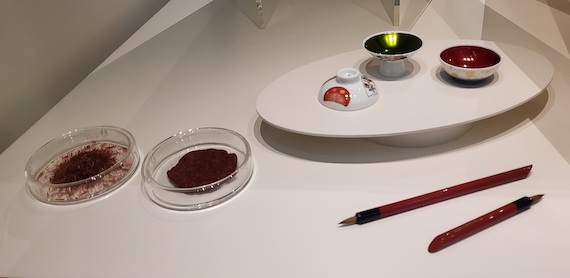
Dried safflower flowers, loose and pressed into a cake, as well as makeup bowls and brushes.
Dyeing clothing with plants is, of course, a very ancient art. The colours that people obtained in the past depended on what kind of plant was native to their area. They had to work out ways of fixing the colour into the cloth, so it didn’t fade in sunlight, or when washed or worn. They also figured out all kinds of ways of altering the basic colour by adding different extra ingredients. The results could produce a range of tones, for example, pale pink through to deep red. Sometimes they achieved quite surprising entire colour changes. Red cabbages can produce cloth that is everything from deep purple, to indigo blue, through aqua and palest green.
Safflower Red is able to perform a similar trick. In this case, it goes from a saturated fire-engine red to iridescent green. (It can also be variations on purple or pink). It’s a startling effect. The other thing about this particular plant is that its petals, being orange, contain only 0.05% red. Separating out the red pigment is time consuming and produces only a tiny amount. Because of this, it is said that safflower red used to be more expensive than gold.
This combination of rarity and novelty made it catnip to well-dressed ladies of fashion in the Edo period of Japan. It was used for lipstick and coveted for underwear, which was considered particularly sensual when it came in bright red.
High Fashion
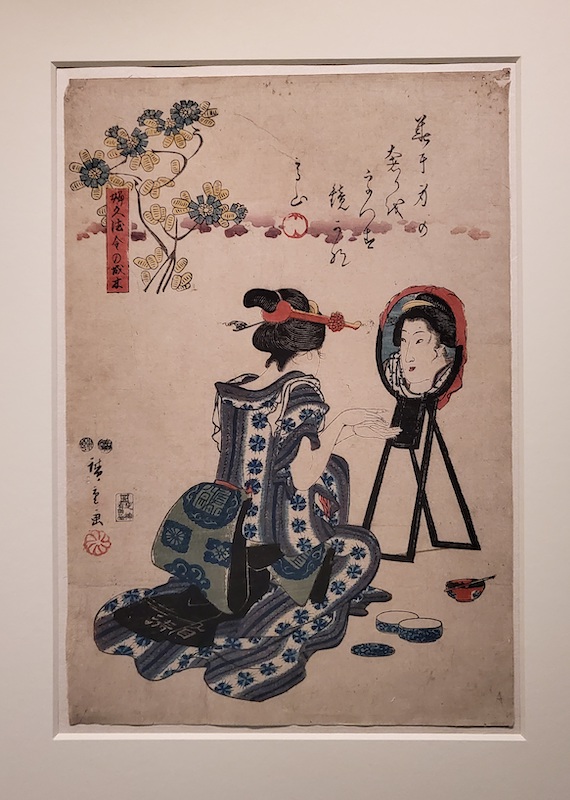
Woman doing her makeup. She has little bowls on the floor next to her to hold the pigment, like the ones shown in the above image.
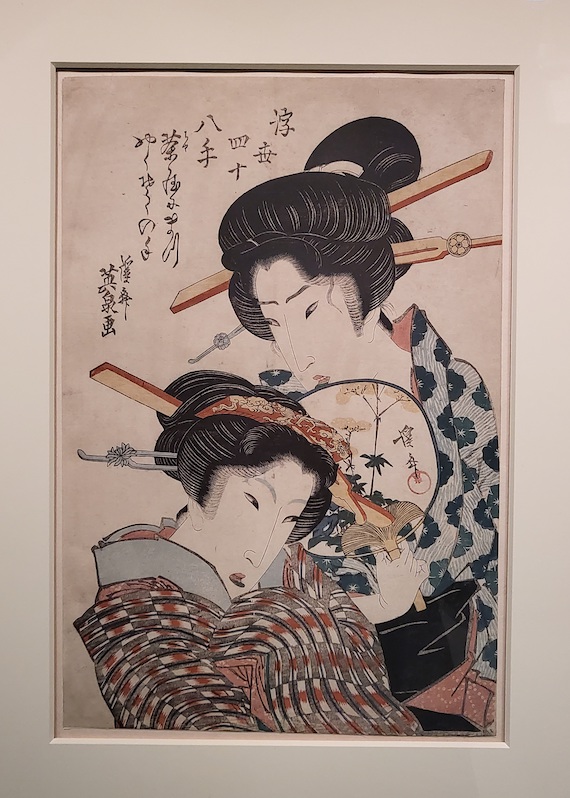
Two women wearing safflower red lipstick.
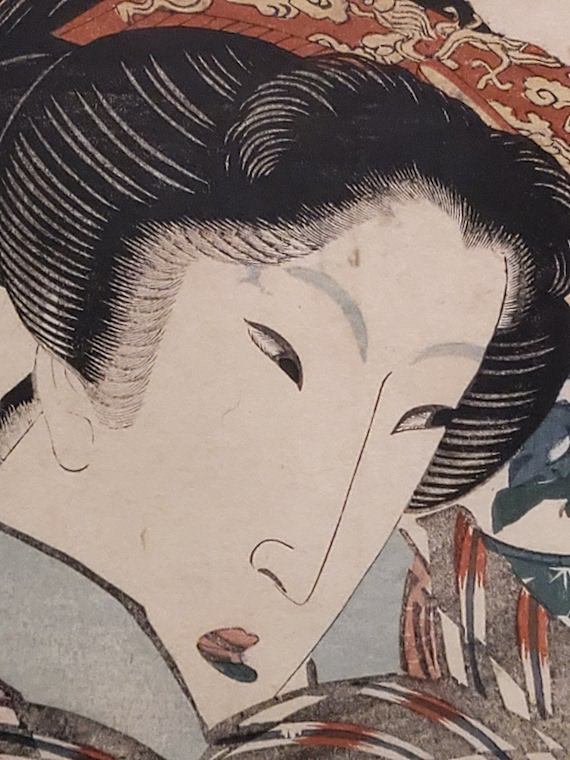
Closeup of the same image – notice the green on her lower lip.
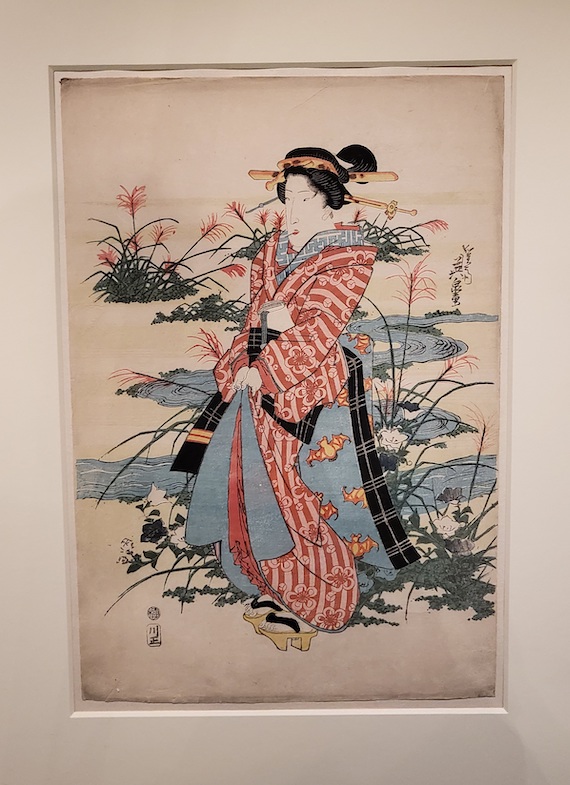
Painting of a woman probably wearing clothing dyed with safflower red in pink and red stripes. Her underwear is pure red.
Although there were very precise codes governing the colours which Japanese women wore historically for different seasons, ages, and events, as well as the correct patterns and prints and type of garments, the mark of a true artist was the ways in which you personalised these. There were periods when female members of Japanese royalty and noblewomen were not allowed to let themselves be seen by members of the public or by anybody really except their close female circle. So it was hard for them to display their wealth and exquisite taste.
They got round it though. When attending events, they rode in a closed carriage. They would extend a single wrist from the window. Eagle-eyed watchers could see the layers of her kimono sleeves. The more layers of costly fabric the better – the implication being that you could afford to wear thirteen silk kimonos all in one go. And the way the colours were arranged showed the lady’s artistic side.
Copying the Trendsetters
Well-dressed women added their own flourishes and subverted the rules. Geisha, who were able to strut about openly often exemplified these high fashion women as well as noblewomen, as it was their job to look immaculately dressed. Artists painted portraits of these glamour girls, paying close attention to what they wore. Copies of these woodblock prints were widely disseminated, acting very like fashion plates in 19th century Paris, and women closely scrutinised and eagerly copied the fashions that Geishas set.
Using safflower red showed their playful side. For a while, it was the fashion for women to paint their lips red in the same way we do today. It was for the same reason, too – red lips indicate youth, health and sexiness. But if you put enough safflower red onto a surface, it goes green. There was a fashion for women to do that for a while, because a) it showed you could afford to layer on tonnes of expensive pigment and b) it was funny and cool. Less well-off women imitated the effect of safflower red lipstick by painting their lips black and adding just a tiny sheen of red over it.
You might wonder: did these historical ladies have a sense of playfulness in their fashion? Did they like things that were funny and cool? Well, yes. This display includes two woodblock prints that show not only the green lip, but, alongside more usual decorations like chrysanthemums and butterflies, also a bat motif on the kimono. Although nature was celebrated in fashion as in art and interior decor, bats were an unusual choice. Maybe these women were proto-goths.
Safflower Red Underwear
If painting your lower lip with safflower red showed you were well-off, imagine how fancy you would be if you had a whole set of undergarments made with the pigment? The best and deepest reds were achieved by dyeing a certain sort of very special silk, which was expensive in itself. It was a fabulous display of wealth to had red underwear. Though display is the wrong word, as very few people are going to see it. That makes it even better. The person to whom a woman revealed her red underwear would have (hopefully) felt very special and lucky, as the sight was reserved just for them. For the purposes of illustration, these beguilingly-clad beauties are shown lifting their outer kimono to give a little peek.
Find it at
Beguiling Beni: Safflower Red in Japanese Fashion is a free display at the V&A Museum until 31st March 2024. You can find it at Japan, Room 45, The Toshiba Gallery.


